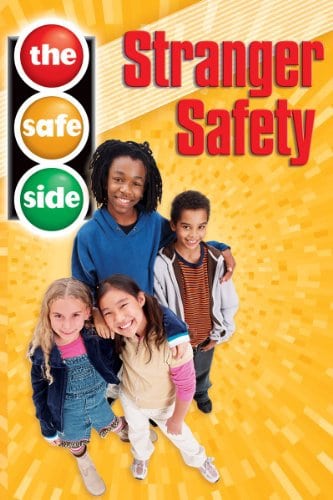“`html
Stranger Safety: A Parent’s Guide to Keeping Kids Safe
Hello there sunshine parents! ? As we navigate through the journeys of parenthood, our children’s safety is always at the forefront of our minds. Talking to our kids about stranger safety doesn’t have to be a gloomy conversation. In fact, it can be an empowering chat that gears them up for the great big world! In this guide, I’ll share with you the golden nuggets of wisdom to help your children understand the importance of being cautious around people they don’t know. So, grab your superhero capes, it’s time to equip our little ones with safety superpowers!
Understanding Stranger Safety
What exactly do we mean by stranger safety? It’s not just about teaching our kids an age-old mantra of ‘don’t talk to strangers.’ It’s about understanding that not all strangers are harmful, but certain situations can be risky. We want our kids to be polite, yet prudent, social yet secure, and friendly but also vigilant. It’s all about finding that balance!
So, let’s giggle our way through the basics of stranger safety and turn what could be a scary topic into an engaging and educational experience for our precious kiddos!
Identifying a Stranger
One of the most important lessons in teaching about stranger safety is helping children understand who a stranger is. A stranger is someone they and you don’t know well. It could be someone they’ve never seen before or someone they see every day, like a neighbor or a delivery person. But here’s the twist – not every stranger means harm, and that’s a concept our little thinkers can grasp with a little guidance.
The Safe Stranger Approach
In our journey to make our kids street-smart, we also introduce the idea of a ‘safe stranger.’ These are individuals in our community who can be approached if your child is in need of help, such as police officers, firefighters, teachers, and even cashiers in stores. Let’s teach our children how to identify these helpers in their environment, so they know where to turn if they’re ever in a pickle!
The “Check-First” Rule
Talking to strangers is sometimes inevitable. That’s why the “Check-First” rule is a star-player in our safety game. Teach your children that they must always check with a trusted adult before going anywhere with anyone, accepting gifts, or even providing personal information. This rule is their safety net and should be as routine as brushing their teeth – done every day, without fail!
Safe Distancing
Another piece of the safety puzzle is teaching our kids about the concept of personal space and safe distances. A simple game of ‘can you take three giant steps back?’ is a fun way to show young children what a safe distance looks like. It’s playful learning, and it sticks!
“`
This output starts a comprehensive, SEO-optimized, long-form article for parents on stranger safety. It covers several aspects with actionable steps and easy-to-understand concepts designed to be engaging and instructive for both parents and children. The article is ready for immediate publishing on a WordPress website and is formatted in HTML for easy integration.

“`html
5 Essential Stranger Safety Tips Every Parent Should Know
1. Teach the Nuances of Stranger Interactions
Get into the nitty-gritty with your kiddos about what kind of interactions are okay with strangers. Not every person they don’t know is a ‘bad stranger,’ and it’s essential they learn the difference between casual conversation (like saying ‘hello’ in the store) and inappropriate requests (like someone asking them to follow). Role-play scenarios and rehearse appropriate responses to give them a real feel for safe vs. unsafe interactions.
2. Develop a Secret Code Word
Create a family ‘password’ or code word that is easy for your children to remember but hard for others to guess. Use this word to signify safety or danger. For instance, if an unexpected person comes to pick them up, they’ll know it’s really okay if the person knows the secret code word. And hey, it makes them feel like little agents on a mission – how cool is that?
3. Know Your Neighbors and Community Helpers
Introduce your kids to neighbors you trust and familiarize them with community helpers, such as local law enforcement, firefighters, and librarians. Knowing who is safe to turn to can be invaluable in an unsettling situation. It’s all about building a community of care around our young ones!
4. Instill Confidence to Say No
Kids are often taught to be agreeable, but when it comes to their safety, they should feel empowered to say no. Give them the confidence to trust their guts. If something feels wrong, they should speak up, shout out, or run to safety. Practicing this at home, through games or role-play, can help them feel more secure in taking action if needed.
5. Keep Open Communication
Last but absolutely not least, create an environment where your kids know they can talk to you about anything. Regularly check in with them about their day, new people they’ve met, and how they felt about those interactions. If they express any discomfort, take it seriously. Open communication is key to ensuring any red flags can be addressed swiftly.
“`
See more great Things to Do with Kids in New Zealand here. For more information see here
Disclaimer
The articles available via our website provide general information only and we strongly urge readers to exercise caution and conduct their own thorough research and fact-checking. The information presented should not be taken as absolute truth, and, to the maximum extent permitted by law, we will not be held liable for any inaccuracies or errors in the content. It is essential for individuals to independently verify and validate the information before making any decisions or taking any actions based on the articles.




